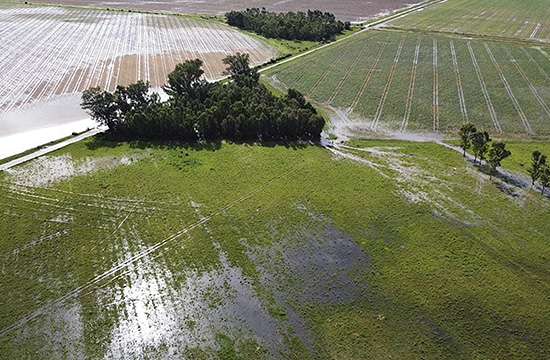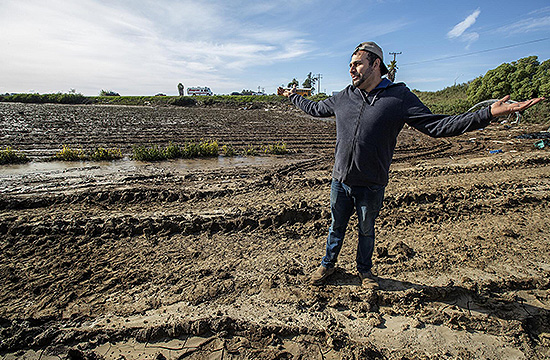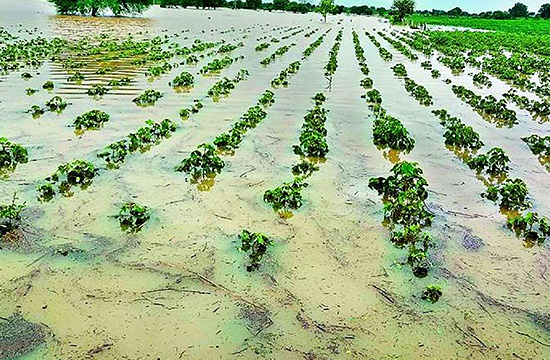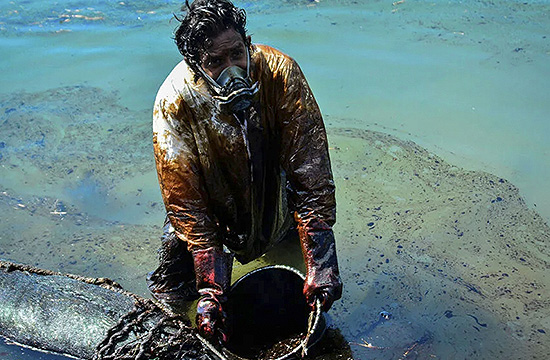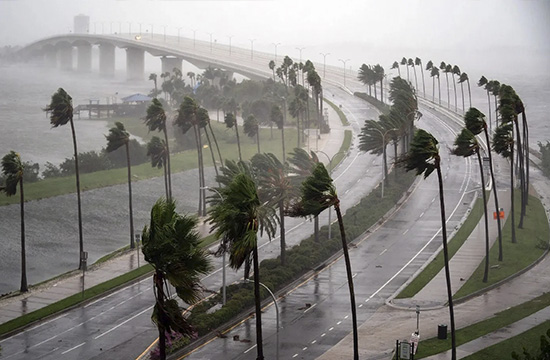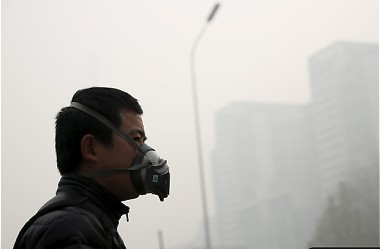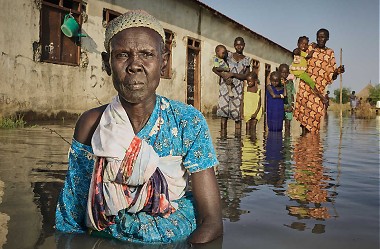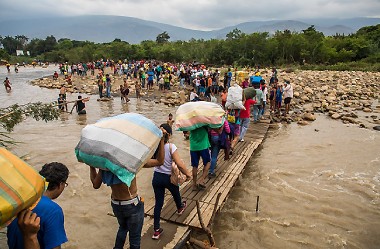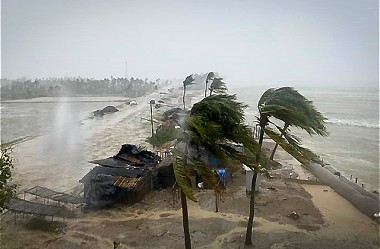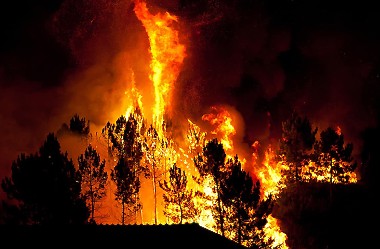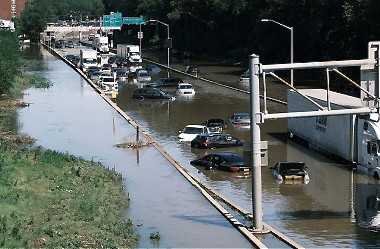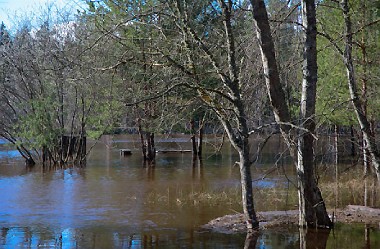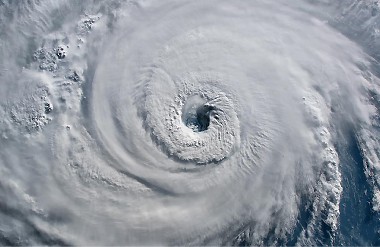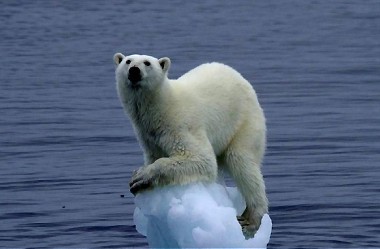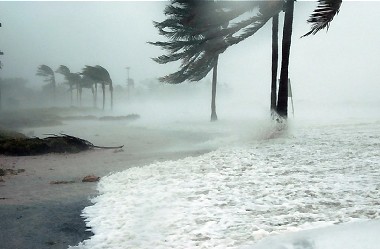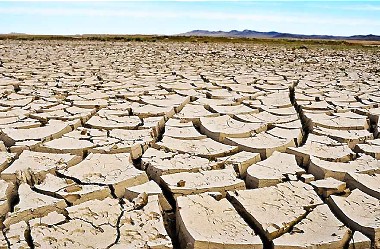The Earth's climate has always changed, but the current warming trend is happening much faster than anything seen in the past 10,000 years. Here's the evidence:
- Temperature Rise: Global average temperature has risen by 1 degree Celsius (2 degrees Fahrenheit) since the late 19th century, with most of the warming happening in the past 40 years.
- Warming Oceans: The ocean absorbs most of the extra heat, with the top layer showing significant warming.
- Shrinking Ice: Ice sheets in Greenland and Antarctica are losing mass at an alarming rate.
- Glacier Retreat: Glaciers are receding around the world, including in major mountain ranges.
- Decreasing Snow Cover: Spring snow cover in the Northern Hemisphere is diminishing, and melting is happening earlier.
- Rising Sea Levels: Global sea level has risen 8 inches in the last century, with the rate accelerating in recent decades.
- Arctic Sea Ice Decline: Both the extent and thickness of Arctic sea ice have shrunk rapidly.
- Increasing Extreme Events: The frequency of heatwaves, intense rainfall events, and other extreme weather events is on the rise.
- Ocean Acidification: The ocean is absorbing more carbon dioxide, leading to increased acidity, which harms marine life.
Scientific evidence from ice cores, satellites, and other sources all point to a clear conclusion: human activities are causing the climate to change at an unprecedented rate.
Effects of Climate Change
As greenhouse gas emissions blanket the Earth, they trap the sun’s heat, leading to global warming and climate change. The world is now warming faster than at any point in recorded history. Warmer temperatures over time are changing weather patterns and disrupting the usual balance of nature. This poses many risks to humans and all other life forms on Earth.
Many people think climate change mainly means warmer temperatures. But the temperature rise is only the beginning of the story. Because the Earth is a system where everything is connected, changes in one area can influence changes in all others.
The consequences of climate change now include, among others, intense droughts, water scarcity, severe fires, rising sea levels, flooding, melting polar ice, catastrophic storms, and declining biodiversity.
Hotter temperatures
As greenhouse gas concentrations rise, so does the global surface temperature. The last decade, 2011-2020, is the warmest on record. Since the 1980s, each decade has been warmer than the previous one. Nearly all land areas are seeing more hot days and heat waves. Higher temperatures increase heat-related illnesses and make working outdoors more difficult. Wildfires start more quickly and spread more rapidly when conditions are hotter. Temperatures in the Arctic have warmed at least twice as fast as the global average.
More severe storms
Destructive storms have become more intense and frequent in many regions. As temperatures rise, more moisture evaporates, exacerbating extreme rainfall and flooding, causing more destructive storms. The warming ocean also affects the frequency and extent of tropical storms. Cyclones, hurricanes, and typhoons feed on warm waters at the ocean surface. Such storms often destroy homes and communities, causing deaths and substantial economic losses.
Increased drought
Climate change is changing water availability, making it scarcer in more regions. Global warming exacerbates water shortages in already water-stressed areas and is leading to an increased risk of agricultural droughts affecting crops and ecological droughts, increasing the vulnerability of ecosystems. Droughts can also stir destructive sand and dust storms that can move billions of tons of sand across continents. Deserts are expanding, reducing land for growing food. Many people now face the threat of not having enough water regularly.
A warming, rising ocean
The ocean soaks up most of the heat from global warming. Over the past two decades, the sea warming rate has enormously increased across all sea depths. As the ocean warms, its volume increases since water expands as it gets warmer. Melting ice sheets also cause sea levels to rise, threatening coastal and island communities. In addition, the ocean absorbs carbon dioxide, keeping it from the atmosphere. However, more carbon dioxide makes the ocean more acidic, which endangers marine life and coral reefs.
Loss of species
Climate change poses risks to species' survival on land and in the ocean, and these risks increase as temperatures climb. Exacerbated by climate change, the world is losing species at a rate 1,000 times greater than any other time in recorded human history. One million species risk becoming extinct within the next few decades. Forest fires, extreme weather, and invasive pests and diseases are among many threats related to climate change. Some species can relocate and survive, but others will not.
Not enough food
Climate changes and extreme weather events are among the reasons behind a global rise in hunger and poor nutrition. Fisheries, crops, and livestock may be destroyed or become less productive. With the ocean becoming more acidic, marine resources that feed billions of people are at risk. Snow and ice cover changes in many Arctic regions have disrupted herding, hunting, and fishing food supplies. Heat stress can diminish water and grasslands for grazing, causing declining crop yields and affecting livestock.
More health risks
Climate change is the single biggest health threat facing humanity. Climate impacts are already harming health through air pollution, disease, extreme weather events, forced displacement, pressures on mental health, and increased hunger and poor nutrition in places where people cannot grow or find sufficient food. Every year, environmental factors take the lives of around 13 million people. Changing weather patterns are expanding diseases, and extreme weather events increase deaths and make it difficult for healthcare systems to keep up.
A Perfect Storm: Climate Change Threatens Agriculture and Food Security
Climate change casts a long shadow over the future of agriculture and food security. Rising temperatures, changing weather patterns, and extreme weather events disrupt agricultural production and threaten the delicate balance of our food systems. Here's a breakdown of the key challenges:
Direct Impacts on Production:
- Heat Stress: Higher temperatures can harm crops, reducing yields and impacting quality. This can be particularly devastating for already heat-stressed regions.
- Droughts: Changes in precipitation patterns can lead to more frequent and severe droughts, limiting water availability for crops and livestock.
- Floods: Increased heavy rainfall events can inundate farmland, destroying crops and disrupting agricultural activities.
- Extreme Weather Events: More frequent and intense storms, hurricanes, and wind events damage crops and infrastructure, leading to losses and food shortages.
Beyond the Field:
- Water Scarcity: Climate change can exacerbate water scarcity, making it harder to meet the irrigation needs of agriculture, a significant water user.
- Sea Level Rise: Rising sea levels threaten coastal farmlands with saltwater intrusion, reducing arable land and impacting agricultural productivity.
- Disrupted Pollination: Changes in temperature and weather patterns can disrupt the activity of pollinators like bees and butterflies, impacting fruit and vegetable production.
- Pests and Diseases: Warmer temperatures can create ideal conditions for spreading pests and diseases that harm crops, leading to increased losses.
A Global Threat, Unequal Impact
The impacts of climate change on agriculture are felt worldwide, but developing countries are often disproportionately affected. They may lack the resources and infrastructure to adapt to changing conditions, making their food systems even more vulnerable.
The Looming Crisis:
Climate change disrupts food production systems, jeopardizing food security for millions. This can lead to:
- Food Shortages: Reduced crop yields and disruptions to food production can lead to food shortages, particularly in vulnerable regions.
- Price Volatility: Disruptions in food supply chains can cause food prices to fluctuate wildly, making it harder for people to afford food, especially the poorest populations.
- Social Unrest: Food insecurity and rising prices can trigger social unrest and instability, leading to humanitarian crises.

